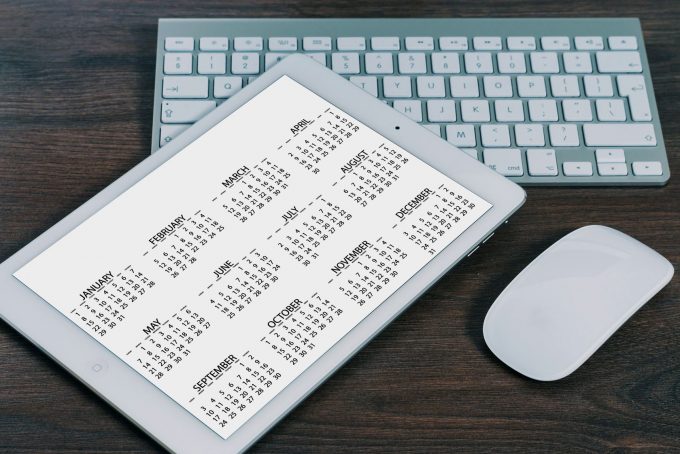
Open Access Barcamp 2022: Where the Community Met
The second Barcamp of the open-access.network project provided participants with opportunity for intensive discussions about topics relating to Open Access. What is the Open Access community concerned about at the moment? What are the current developments and projects? Where do problems and challenges arise? We now present the highlights of this two-day online event.
by Hannah Schneider and Andreas Kirchner

This year’s Open Access Barcamp took place online once again, on 28 and 29 April 2022. From 9:00 a.m. to 2:30 p.m. on both days, the roughly 50 participants were able to put together their own varied programme, and engage in lively discussions about current Open Access topics.
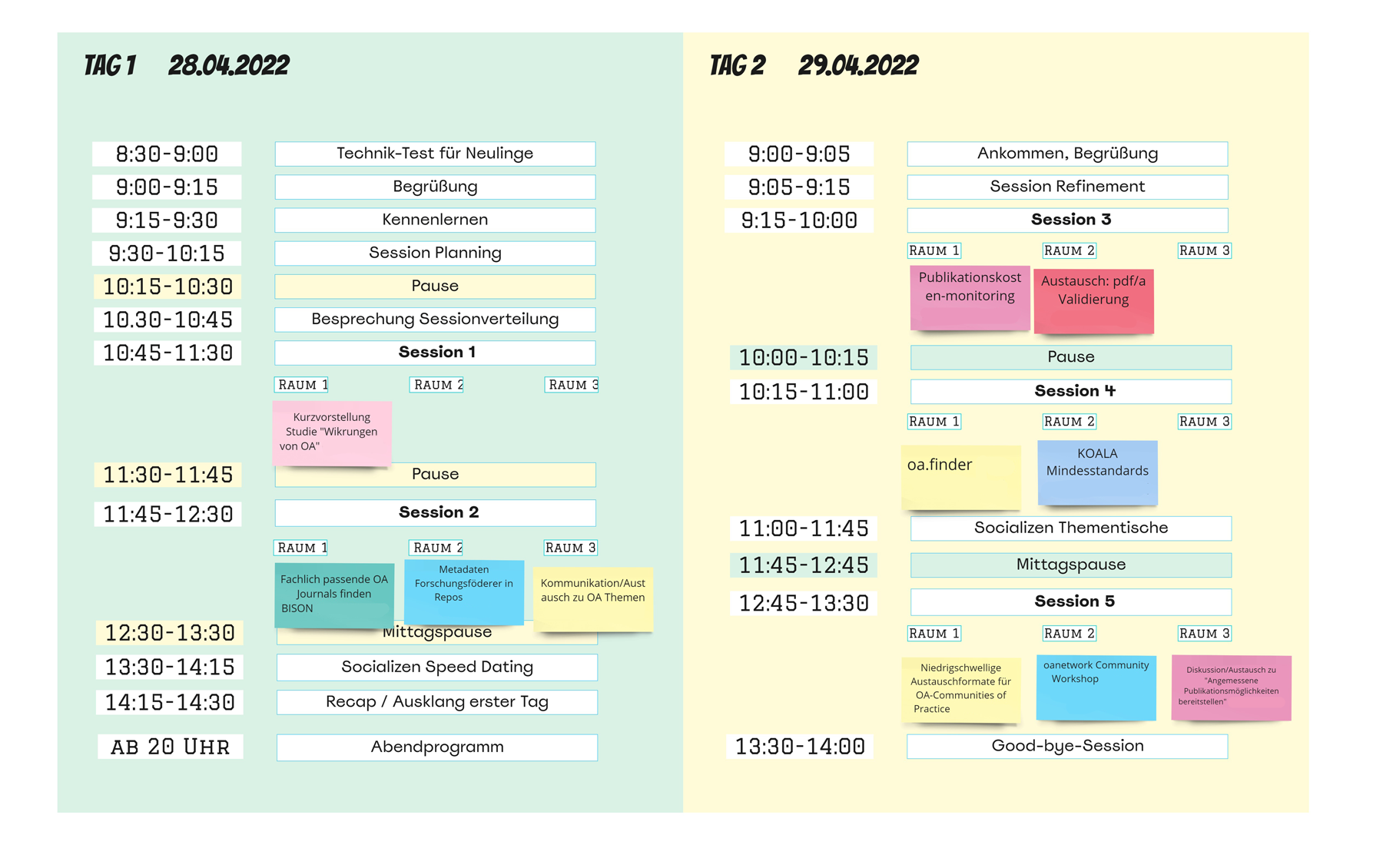
Open Access Barcamp 2022 Agenda
What worked well last year was repeated this year: The innovative conference tool Gather was again used to facilitate online discussions, and the organisers prioritised opportunities to have discussions and to network when designing the programme. They integrated a speed-dating format into the programme and offered an open round at topic tables. In the context of the open-access.network project, the Communication, Information and Media Centre (KIM) of the University of Konstanz once again hosted the Barcamp. While interactively planning the sessions on the first day, it became clear that the Open Access community is currently dealing with a very wide range of topics.
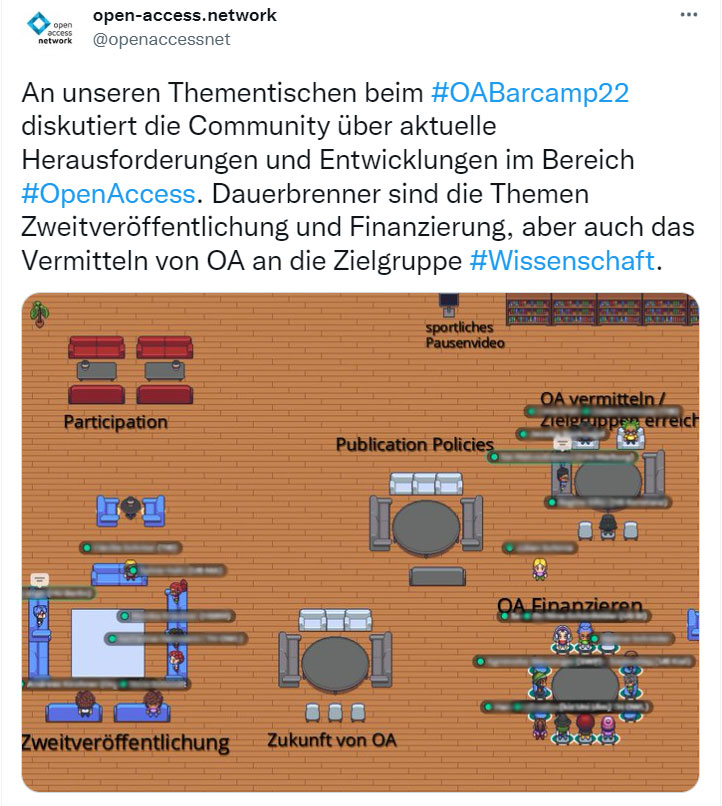
Illustration 1: open-access.network tweet about the topic tables
The study recently published by the TIB – Leibniz Information Centre for Science and Technology University Library entitled “Effects of Open Access” (German) was presented in the first session. This review of literature examined 61 empirical papers from the period 2010-2021, analysing various impact dimensions of Open Access, including aspects such as attention garnered in academia, the quality of publications, inequality in the science system or the economic impact on the publication system.
The result on the citation advantage of Open Access publications was discussed particularly intensively. Here, the data turned out to be less clear than expected. However, it was also noted that methodological difficulties could occur during measurement in this field. The result of the discussion was that a citation advantage of Open Access can continue to be assumed and can also be cited in advisory discussions. “All studies that show no advantage do not automatically prove a citation disadvantage,” as one participant commented.
Tools and projects to support Open Access
Various tools to support Open Access publishing were particularly popular this year. With “B!SON”, a recommendation service was presented that is helpful for many scientists and scholars in finding a suitable Open Access journal for articles that have already been written. The title, abstract and references are entered into the tool, which then displays suitable Open Access journals on this basis, and awards them a score which can be used to determine a “match”. B!SON was/is developed by the TIB and the Saxon State and University Library Dresden (SLUB).
Another useful service with a similar goal was introduced in the form of the “oa.finder”, developed by the Bielefeld University Library in the context of the open-access.network project. Authors can use this research tool to find suitable publication locations by entering their own role in the submission process, as well as the scientific institution where they work. It is possible to tailor the result to suit individual needs using different search and filter options. Both tools are currently in the beta version – the developers are still particularly keen to receive feedback.
A further session was dedicated to the question of what needs to be considered when converting from PDF to PDF/a in the context of long-term archiving, and which tools can be drawn upon to validate PDF/a files. This provided an opportunity to discuss the advantages and disadvantages of tools such as JHOVE, veraPDF and AvePDF.
The KOALA project (building consortial Open Access solutions) showed us which standards (German) apply for journals and publication series that participate in financing through KOALA consortia. Based upon these standards, the project aims to create an instrument that contributes to safeguarding processes and quality in journals and publishing houses. The project is developing sustainable, collaborative funding through scientific libraries, in order to establish an alternative to the dominant APC model.
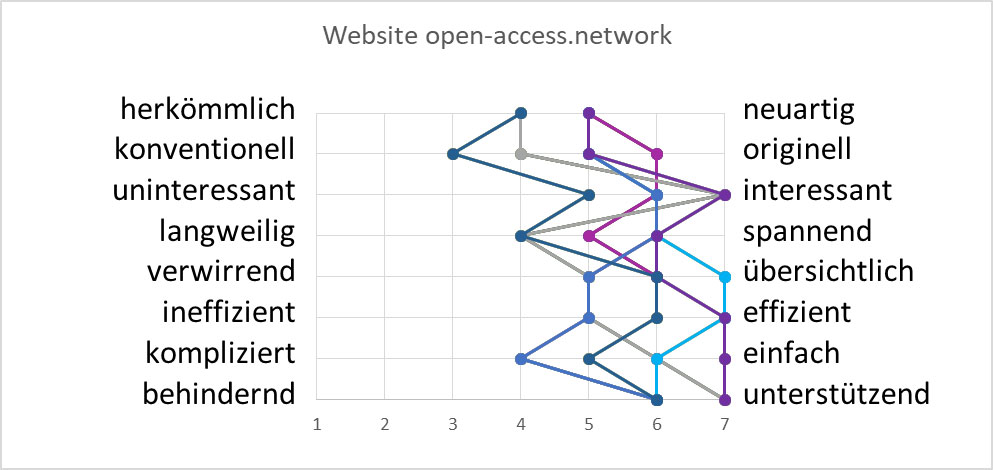
Illustration 2: Results on the User Experience of the open-access.network website
In addition, the open-access.network project gave the Barcamp participants the opportunity to give feedback on its services. On the one hand, they evaluated the range of information and discussed the newly designed website. On the other, they focussed on the project events, discussing achievements and making suggestions for improvement. Here, the breadth of the different formats received particular praise, as did the fact that offers such as the “Open Access Talk” series have become very well established in the German-speaking countries.
Open Access communication: Reaching the target audience
Many members of the community are still working on how best to bring OA issues to different audiences. One of the sessions emphasised that, although the aspect of communication in Open Access work was regarded as very important, the required skills are often lacking – not least, because it has hardly played a role in library training to date. One of the central challenges in reaching the individual target groups is that different communication routes need to be served, which in turn requires strategic know-how. In order to stabilise and intensify the exchange, the idea of founding a focus group within the framework of the open-access.network project was proposed; this will be pursued further during a preparatory meeting at the end of June 2022.
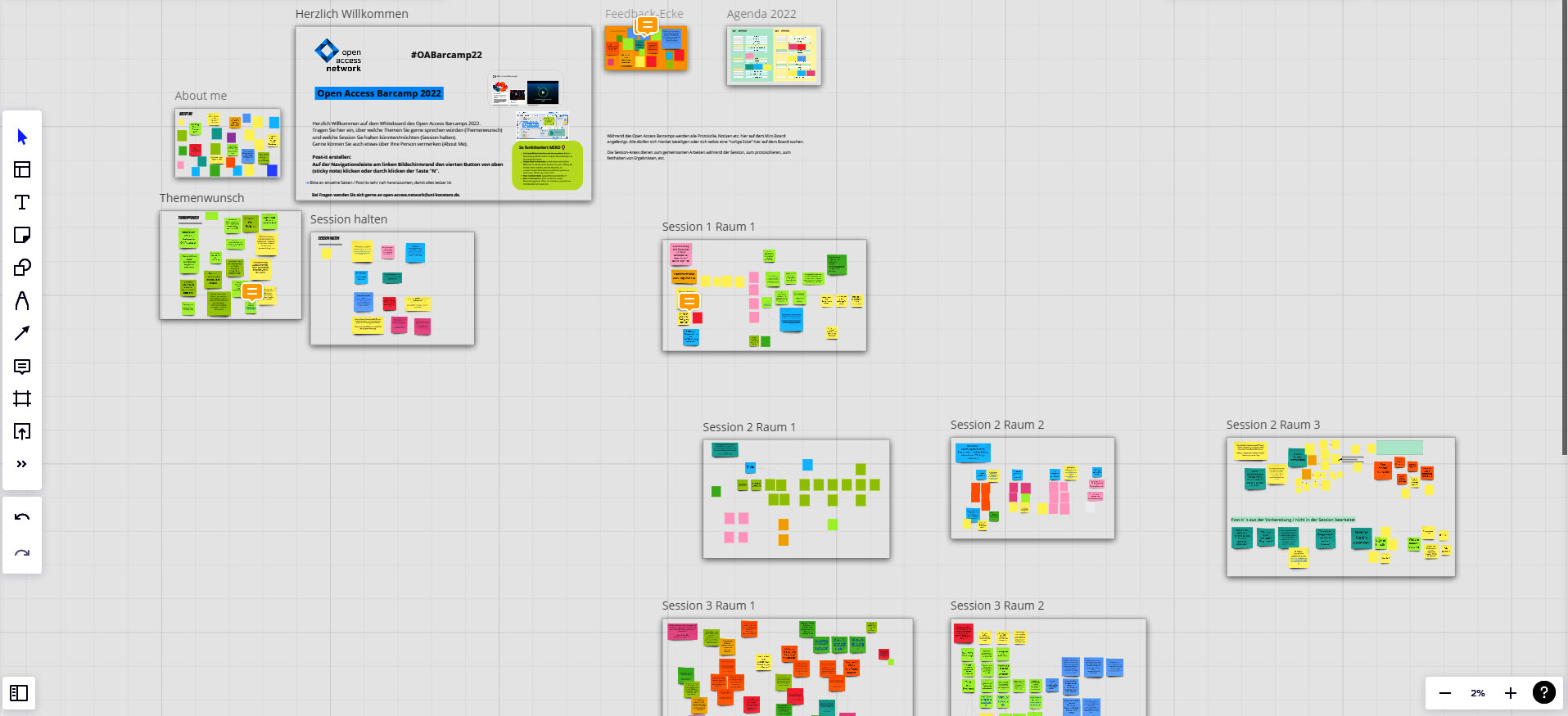
Illustration 3: Screenshot of MIRO whiteboard for documenting the Barcamp
Another session also considered the question of communicative ways to disseminate Open Access. Here the format of low-threshold exchange formats was discussed. The Networking and Competence Centre Open Access Brandenburg relocated its own “Open Access Smalltalk” series (German) to the Barcamp – very much in the spirit of openness, and initiated a discussion on how to get interested people around the table. In particular, it was argued that virtual formats offer a lower barrier to participation in such exchanges and that warm-ups can really lead to mobilising participants.
Challenges faced by libraries
The issues and challenges of practical day-to-day Open Access at libraries were also discussed a great deal this year. The topic of how to monitor publication costs found great resonance, for example, and was discussed both in a session and in one of the subsequent discussions one of the topic tables. Against the backdrop of increasing Open Access quotas and costs, libraries face the urgent challenge of getting an overview of the central and decentral publication costs. Here they are applying various techniques, such as de-centrally using their own inventory accounts, but also through their own research and with the help of the Open Access monitor.
A further session explored the topic of secondary publication service, specifically looking at which metadata can be gathered on research funders in repositories, and how. The discussion covered specific practical tips for implementation, including recommendations for the metadata schemata Crossref and RADAR/DataCite, for example.
One of the final sessions at the Barcamp explored the issue of how libraries can ensure that they provide “appropriate” publication opportunities. In doing so, reference was made to the “Recommendations for Moving Scientific Publishing Towards Open Access” (German), published by the German Council of Science and Humanities in 2022. To find out which publication routes researchers want and need, it is necessary to be in close contact with the various scientific communities. The session considered how contacts could be improved within the participants’ own institutions. Various communication channels were mentioned, such as via subject specialists, faculty councils/ representatives or seminars for doctoral candidates.
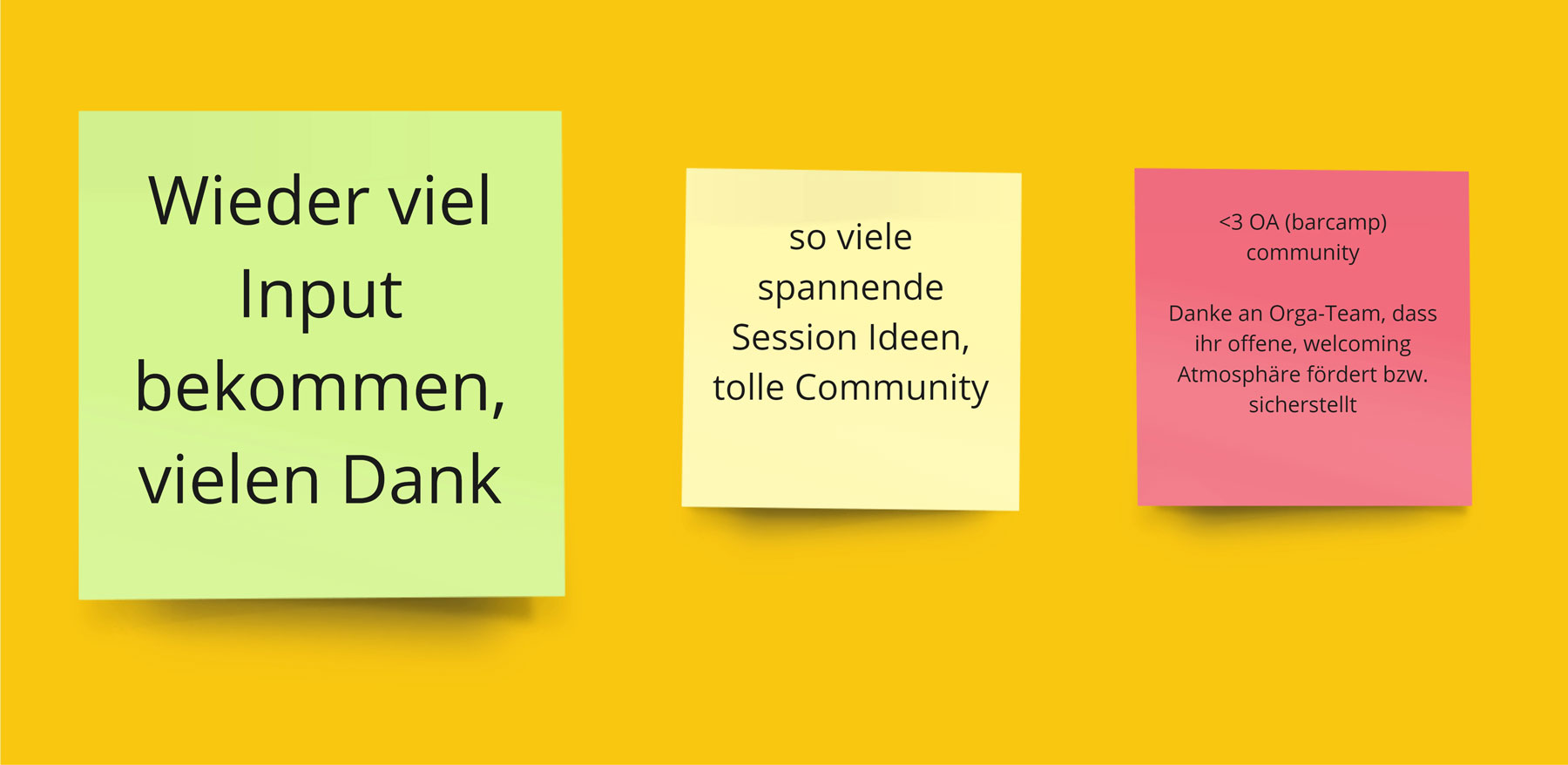
Illustration 4: Screenshot of feedback from the community
Conclusion
We can look back on a multifaceted and lively Open Access Barcamp 2022. The open concept was well received, and there was considerable willingness from the participants to actively join in and help shape the sessions. The jointly compiled programme offered a wide range of topics and opportunities to discuss everyday Open Access issues. In this virtual setting, people also joined in and contributed to the collegial atmosphere. After the two days, the community returned to everyday life armed with new input and fresh ideas; we would like to thank all those who took part, and look forward to the next discussion.
You may also be interested in:
- A documentary about the Barcamp can be found on Twitter: #OABarcamp2022
- Open Access goes Barcamp, Part 1: A New Networking Opportunity for the Open Access Community
- Open Access goes Barcamp, Part 2: How to Organise Networking Online
Hannah Schneider is a member of the the Team Open Science at the Communication, Information and Media Centre (KIM) at the University of Konstanz and is involved in the BMBF-funded open-access.network project. Her tasks include organising events and editing the Website open-access.net website.
Portrait: Hannah Schneider©
Andreas Kirchner is a member of the Team Open Science at the Communication, Information and Media Centre (KIM) at the University of Konstanz and coordinates the BMBF-funded project open-access.network together with Dr Anja Oberländer. He is also a board member of the Open Access publisher meson press (Lüneburg) and the non-profit foundation ScholarLed (The Hague).
Portrait: Andreas Kirchner©
View Comments
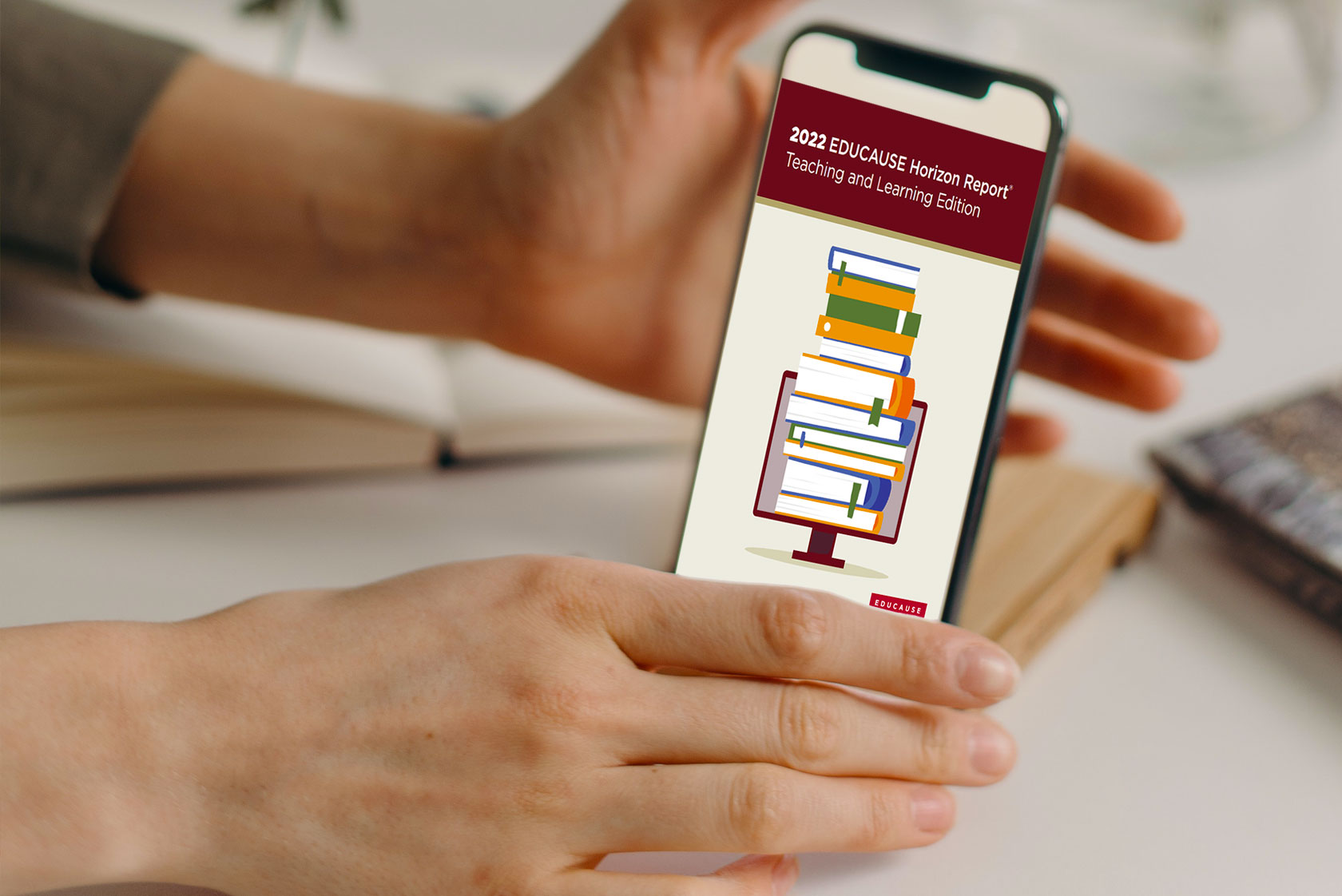
Horizon Report 2022: Trends Such as Hybrid Learning, Micro-certificates and Artificial Intelligence are Gaining Traction
According to the Horizon Report, certain familiar trends from previous years, such as...



